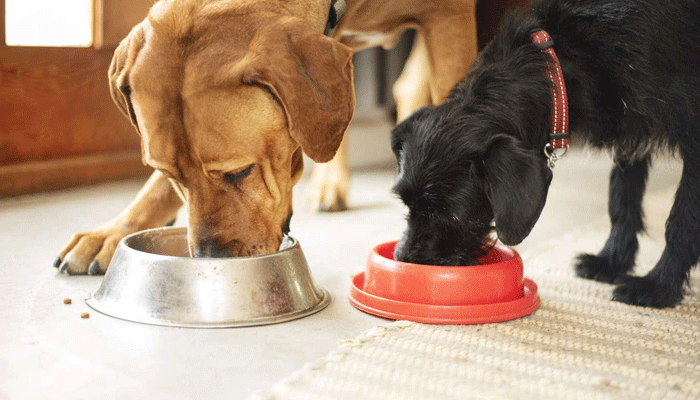
You want the best for your furry friend as a pet owner. You want them to be healthy, happy, and long. One of the most important factors affecting your pet’s well-being is their food. The quality and quantity of food you feed your pet can significantly impact their physical and mental health.
But what exactly is high-quality food for pets? How can you tell if your food is good for your pet? And what are the benefits of feeding your pet high-quality food? We will address all of these queries and more in this blog post. We will also share some tips on choosing the best food for your pet and making the transition easier for them.
What is High-Quality Food for Pets?
High-quality pet food meets or exceeds your pet’s nutritional needs according to age, size, breed, activity level, and health condition. High-quality pet food is made with natural, wholesome, and human-grade ingredients, such as meat, fish, eggs, fruits, vegetables, grains, and healthy fats. High-quality pet food does not contain artificial colors, flavors, preservatives, fillers, by-products, or other harmful substances that can compromise your pet’s health.
High-quality pet food can come in different forms, such as dry, wet, raw, freeze-dried, or dehydrated. The best form of food for your pet depends on their preference, digestion, and dental health. You can also mix different forms of food to provide variety and balance for your pet.
How do you choose high-quality food for your pet?
Choosing high-quality food for your pet can be challenging, especially with many available options. Here are some tips to help you make the right decision:
• Read the label. The pet food label can tell you a lot about the quality and ingredients of the food. Look for the following information on the label:
• The name of the product. The product’s name should indicate the food’s main ingredient or source of protein. For example, if the product is called “Chicken Formula,” it should contain at least 95% chicken. If the product is called “Chicken Dinner,” it should have at least 25% chicken. If the product is called “With Chicken,” it should have at least 3% chicken. Avoid products that use vague or generic terms, such as “meat,” “animal,” or “poultry.”
• The guaranteed analysis. The guaranteed analysis shows the minimum and maximum percentages of crude protein, crude fat, crude fiber, and moisture in the food. These percentages can help you compare the nutritional value of different foods. Generally, higher protein and fat levels indicate higher quality, while lower fiber and moisture levels indicate lower quality. However, these percentages do not reflect the digestibility or bioavailability of the nutrients in the food, so they are not the only criteria to consider.
• The ingredient list. The ingredient list shows the ingredients used in the food in descending order by weight. The first few ingredients are the most important, as they make up the bulk of the food. Look for specific, identifiable, and beneficial ingredients for your pet, such as named meats, organs, fruits, vegetables, and grains. Avoid ingredients that are vague, unidentified, or harmful for your pet, such as meat meal, meat by-products, animal digest, corn gluten meal, wheat gluten, soybean meal, BHA, BHT, ethoxyquin, propylene glycol, or artificial colors, flavors, or sweeteners.
• The nutritional adequacy statement. The nutritional adequacy statement shows whether the food is complete and balanced for your pet’s life stage and lifestyle, according to the standards set by the Association of American Feed Control Officials (AAFCO). Look for foods that are labeled as “formulated to meet the nutritional levels established by the AAFCO Dog (or Cat) Food Nutrient Profiles for (life stage)” or “animal feeding tests using AAFCO procedures substantiate that (product name) provides complete and balanced nutrition for (life stage).” Avoid foods labeled “for intermittent or supplemental feeding only” or “not for long-term use.”
• Do your research. The label of the pet food is not the only source of information about the quality and safety of the food. You can also do some research online or offline to learn more about the manufacturer, the sourcing, the processing, the testing, and the reputation of the food. Look for the following information when doing your research:
• The manufacturer. The manufacturer of the pet food is the company that makes or oversees the making of the food. Look for manufacturers that are transparent, trustworthy, and reputable. You can check the manufacturer’s website, social media, customer reviews, and ratings to understand their credibility and quality. You can also contact the manufacturer directly and ask them questions about their food, such as where they source their ingredients, how they process their food, how they test their food for safety and quality, and how they handle recalls or complaints.
• The sourcing. The sourcing of the pet food is the origin and quality of the ingredients used in the food. Look for foods that use natural, wholesome, and human-grade ingredients that come from reliable and ethical sources. You can check the label, the website, or the certificate of analysis of the food to see where the ingredients come from and how they are graded. You can also look for foods that use organic, non-GMO, hormone-free, antibiotic-free, or sustainably raised or harvested ingredients, which indicate higher standards and practices.
• The processing. The processing of the pet food is the method and degree of transformation of the ingredients into the final product. Look for foods that use processing methods that preserve the ingredients’ nutritional value, freshness, and flavor and minimize the risk of contamination or degradation. You can check the label, the website, or the certificate of analysis of the food to see how the food is processed and what additives or preservatives are used. You can also look for foods that use processing methods that are gentle, minimal, or natural, such as baking, steaming, freeze-drying, or dehydrating, as these indicate higher quality and safety.
• The testing. Pet food testing verifies and validates the quality and safety of the food. Look for foods that undergo rigorous and regular testing for various parameters, such as nutritional analysis, microbial analysis, toxin analysis, shelf-life analysis, and palatability analysis. You can check the label, the website, or the certificate of analysis of the food to see what tests are performed and what results are obtained. You can also look for foods tested by independent, third-party, or accredited laboratories, indicating higher reliability and accuracy.
• The reputation. The reputation of the pet food is the feedback and evaluation of the food by other pet owners, experts, or authorities. Look for foods with positive reviews, ratings, awards, or endorsements from other pet owners, veterinarians, nutritionists, or organizations. You can check the website, social media, customer testimonials, or online food forums to see what others say about the food. You can also look for foods recalled, investigated, or sued for quality or safety issues, which indicate lower reputation and trustworthiness.
• Consult your veterinarian. Your veterinarian is the best person to advise you on the optimal diet for your pet based on their needs and preferences. Your veterinarian can help you assess your pet’s current health condition, weight, age, breed, activity level, and special dietary requirements or sensitivities. Your veterinarian can also help you compare different foods and brands and recommend the best one for your pet. Your veterinarian can also help you monitor your pet’s response to the new food and adjust the amount, frequency, or type of food as needed. If you want to save on pet supplies, consider using the PET Stock Promo Code for a budget-friendly purchase.
How do you transition your pet to high-quality food?
Transitioning your pet to high-quality food can be a rewarding and beneficial change for your pet, but it can also be a challenging and stressful process for you and your pet. Here are some tips to help you make the transition smoother and easier for your pet:
• Start slow. The most important tip for transitioning your pet to high-quality food is to do it gradually and patiently. A sudden change in your pet’s diet can cause digestive upset, such as vomiting, diarrhea, gas, or bloating, as your pet’s body needs time to adjust to the new food. To avoid this, start by mixing a small amount of the fresh food with your pet’s current food, and gradually increase the proportion over several days or weeks until you completely replace the old food with the new food. The exact duration and ratio of the transition may vary depending on your pet’s age, size, health, and tolerance. Still, a general guideline is to follow a 10% rule, which means increasing the new food by 10% daily until you reach 100% after ten days. For example, on day 1, you can feed your pet 90% of the old food and 10% of the new food; on day 2, you can provide your pet 80% of the old food and 20% of the fresh food, and so on until you reach 100% of the new food on day 10.
Be consistent. Consistency and persistence are other important tips for transitioning your pet to high-quality food. Do not switch back and forth between different foods or brands, as this can confuse your pet and cause more digestive problems. Stick to one type of food and brand and follow the same daily feeding schedule and routine. Do not give your pet any treats, table scraps, or human food during the transition, as these can interfere with your pet’s appetite and digestion. If your pet refuses to eat the new food, do not give up or give in. Try to entice your pet by warming up the food, adding water or broth, or mixing in some canned food or toppers. However, do not force your pet to eat the new food, which can create a negative association and stress. If your pet still does not eat the fresh food after a few hours, remove the food and try again later. If your pet eats the new food for less than 24 hours, consult your veterinarian.
• Monitor your pet. The last tip for transitioning your pet to high-quality food is closely monitoring your pet’s health and behavior. Observe your pet’s appetite, energy, weight, coat, skin, eyes, ears, teeth, and stools. Look for any signs of improvement or deterioration, such as increased or decreased hunger, thirst, activity, weight, improved or worsened coat, skin, eyes, ears, teeth, or normal or abnormal stools. You can be assured that the new food works well for your pet if you notice any positive changes, such as more energy, a shinier coat, or firmer stools. You may need to stop the fresh food and consult your veterinarian if you notice any negative changes, such as vomiting, diarrhea, lethargy, or allergies. Some minor and temporary digestive issues are normal during the transition, but if they persist or worsen, they may indicate an intolerance or allergy to the new food. Your veterinarian can help you identify the cause and solution of the problem and recommend a different food or supplement for your pet.
What are the Benefits of Feeding Your Pet High-Quality Food?
Feeding your pet high-quality food can benefit your pet’s health and happiness. Here are some of the most common and significant benefits of providing your pet with high-quality food:
• Improved digestion. High-quality food for pets is easier to digest and absorb, as it contains natural, wholesome, and human-grade ingredients and no artificial or harmful substances. This means your pet can get more nutrients and energy from the food and produce less waste and odor. Improved digestion can prevent or reduce common digestive issues, such as constipation, diarrhea, gas, or bloating, and improve your pet’s overall comfort and well-being.
• Stronger immunity. High-quality pet food can boost your pet’s immune system, as it contains essential vitamins, minerals, antioxidants, and other beneficial compounds that can help your pet fight off infections, diseases, and parasites. A stronger immunity can protect your pet from environmental stressors, such as pollution, allergens, or toxins, and reduce the risk of chronic or degenerative conditions like cancer, diabetes, or arthritis.
• Healthier skin and coat. High-quality pet food can improve your pet’s skin and coat health, as it contains healthy fats, such as omega-3 and omega-6 fatty acids, that can moisturize, nourish, and protect your pet’s skin and fur. A healthier skin and coat can also prevent or reduce common skin and coat problems, such as dryness, itchiness, flakiness, dandruff, or shedding, and improve your pet’s appearance and attractiveness.
• Better dental health. High-quality pet food can improve your pet’s dental health, as it contains ingredients that can clean, strengthen, and freshen your pet’s teeth and gums. For example, dry food can help scrape off plaque and tartar, while wet food can help hydrate and soothe your pet’s mouth. Better dental health can also prevent or reduce common dental problems, such as bad breath, tooth decay, gum disease, or tooth loss, and improve your pet’s oral hygiene and comfort.
• Longer lifespan. High-quality food for pets can extend your pet’s lifespan, providing them with optimal nutrition, health, and happiness throughout their life stages and lifestyles. By feeding your pet high-quality food, you can help your pet live longer, healthier, and happier and enjoy more quality time and memories with your pet. If you want to save on pet food expenses, consider using a Pets Promo Code to get discounts on your purchases. This way, you can provide the best for your pet without breaking the bank.
Conclusion
Feeding your pet high-quality food is one of the best things you can do for your pet’s well-being. High-quality pet food can give your pet the nutrition, health, and happiness they deserve, bringing you and your pet closer together. However, choosing and transitioning to high-quality food for your pet can take time and effort. Hence, you need to do your homework, consult your veterinarian, and follow some tips to make the process easier and smoother. By doing so, you can reap the benefits of feeding your pet high-quality food and give your pet the gift of a long and fulfilling life.








